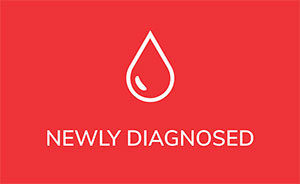Dr. Brian Koffman, the Executive Vice President (EVP) and Chief Medical Officer (CMO) of the CLL Society, counts down his top ten CLL related abstract from ASCO or the American Society of Clinical Oncology Annual Meeting held May 31 – June 4, 2019, Chicago, IL.
#8
Second cancer incidence in CLL patients receiving BTK inhibitors (BTKi).
What good does it do to survive our CLL, if we are going to die earlier of a second cancer? We already know that all chronic lymphocytic leukemia patients have compromised immune systems and as a result have a higher incidence of both infections and second cancers.
The hope was that by treating CLL with BTK Inhibitors, it might be possible to lower the risk of second primary neoplasms (cancers) or SPN and also Richter’s Transformation (RT) and non-melanoma skin cancers (NMSC) as BTKi partially restore the immunity. This trial out of Ohio State University (OSU) looked at exactly that issue. We know that some infection risks improve on a BTKi.
Takeaways:
- This trial looked retrospectively at 691 patients who had taken ibrutinib or acalabrutinib at OSU.
- The average age was 64.
- 2/3 had had prior chemo-immunotherapy.
- 56% had never smoked.
- 68 pts (10%) were diagnosed (dx) with SPN including cases of:
- 13 lung.
- 9 melanoma.
- 9 prostate.
- 7 bladder.
- Smoking and low counts of CD8 (T lymphocytes that are important for cancer surveillance and suppression) increased the second cancer risk.
- RT was diagnosed in 58 pts (8%).
- NMSC in 138 pts (20%)..
- At a median follow-up of 44 months, 179 pts had died with a 3 year overall survival of 79%
- The most common causes of death were CLL/RT (57%) followed by SPN (13%).
Conclusions:
CLL patients on a BTKi have an increased risk compared to non CLL patients of the three types of secondary cancers studied:
- second primary neoplasms (cancers) or SPN
- Richter’s Transformation (RT)- a cancer specific to CLL patients
- non-melanoma skin cancers (NMSC)
The study compared the incidence of these cancers in CLL patients to that in non CLL patients but did not do the more interesting comparison to other CLL patients who were not on a BTKi. That might be a hard study to do these days because of how much the treatment landscape has shifted.
Still these data remind us of the need for our regular cancer screenings (PAPs, mammos, colonoscopy, PSA, skin checks, etc.) even when our disease is well controlled with a BTKi.
And it also reminds us that we need to continue to ask the researchers to look at the big picture, not just at response rates, but at overall survival.
Here is my brief video review of this abstract:
Here is the link to the ASCO abstract: Second cancer incidence in CLL patients receiving BTK inhibitors (BTKi).
Stay strong and alert to other problems besides CLL.
We are all in this together.
Brian

















